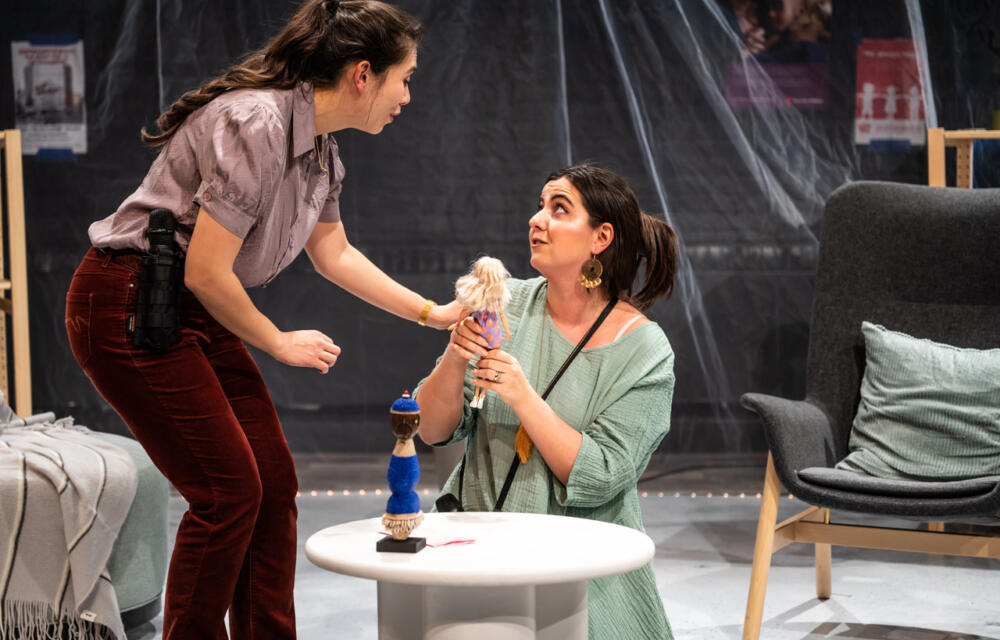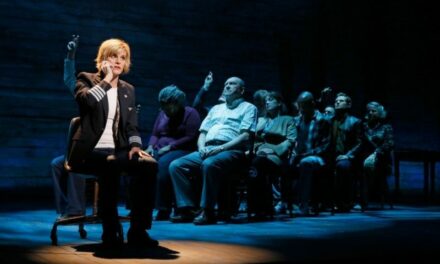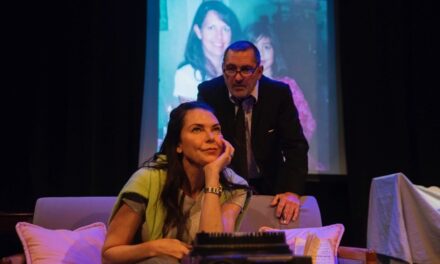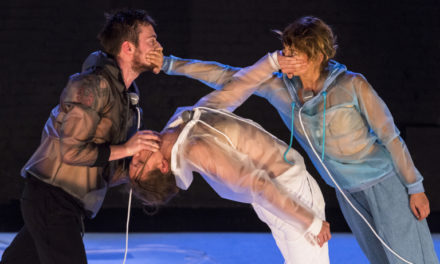When I thought about why I wanted to write this article, a simple, almost childlike thought came to mind: because I’m downright giddy that Toronto theatres have reopened. And what’s most exciting is that my fellow “emerging” artists are starting to…well, merge.
To put it plainly, the vibe has been electric. Theatres across the country produced full or almost full seasons, arts workers booked gigs, and one could sit in the theatre with a newfound appreciation for the magic of live performance. Yes!
For international readers, Toronto’s COVID-19 restrictions were gradually lifted after the Omicron wave in early 2022, so this half season was the first full return to “normalcy” in years. And for the budding artists (like myself) who have been waiting for the resurrection of an industry that they want to build a career in, this past summer and fall in the city have restored a sense of hope.
I’m constantly inspired and uplifted by my fellow young artists. We’re passionate, scrappy, and hungry to work and learn. So, it made total sense to chat with Annie Luján and Kiana Woo to gauge where the emerging artists are at.
Annie and Kiana are actors, clowns, and theatre creators who have both recently graduated from the Soulpepper Theatre Academy. Through the program, they got to work with some of the country’s most influential theatre makers, perform in the company’s mainstage season, and continue to develop their induvial artistic practice.
As we sat in a bustling coffee shop in the Distillery District one evening, it was evident that they both shared my giddiness. We reflected on our experiences coming out of the pandemic lockdowns and talked about what’s exciting us most on Toronto’s stages.

Annie Luján by Audrianna Martin Del Campo
Where we’ve been
“It took me a while to reconnect to live performance again,” Kiana started. “It feels like some plays that are going on right now are directly addressing what the world’s gone through in the last two years, while some plays aren’t at all – they’re just theatre for entertainment’s sake. You realize that both are necessary.”
That sparked the first big question: Now that it’s back, what is the role theatre is taking on? What was it in the past, and how has it changed?
“As someone recently said to me, we’re in an era of response as a society, and our art reflects that,” Annie said. “But isn’t it more interesting to be in a place of suggestion? It’s harder to do – to suggest what we as people could do better or imagine what a better future would look like through our art. But I think that’s where we’re headed.”
Both phases are important and compelling in their own right. But, it feels like suggestion has an energetic, forward momentum to it in comparison response/reflection. What could theatre like that do for a community, and how? We took a step back and thought about what we specifically missed about theatre during the Pandemic.
“There were moments on stage that made me realize what I was missing from the naturalism of tv and film: big choices from actors that worked in that exact beat,” Annie explained. “It’s a moment that makes you breathe different, it changes the feeling in the room. You’re impacted by their choices which happens because they’re so present.”
In other words, it’s live. Audiences are naturally affected by the realization that anything could happen – each moment is heightened by this knowledge. And after so much time away, perhaps we’re all more aware of this mystical, tingly feeling. After all, it’s what makes theatre theatre.
Shifting the perspective
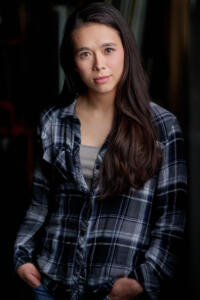
Kiana Woo by Tim Leyes
We agreed that the concept of “in-person” was most fascinating. “Risk, in a way, is synonymous with presence,” Annie added. “There’s something special there that needs to be explored further.”
Kiana agreed. “There’s 100 people sitting in a room together. What does it mean that there’s a group of people sitting and listening together?”
In a time of mass media consumption, it’s sort of amazing that people still choose to leave their homes and put down their screens to sit and watch something in a specific place at a certain time, together. That said, we acknowledged that the city’s theatregoers are a niche group.
“I’m dying to know what Toronto’s theatre audience base will be like in 30 years. How do we appeal to the younger general public?” Annie asked. “How do you get twentysomethings to decide that’s what they want to do with their Saturday night?”
The three of us mused over our non-theatre industry friends who feel like seeing a play isn’t the place for them. “The irony is, theatre tends to attract people who initially feel like they don’t belong, like in high school,” Kiana added. “But in society, the community is somehow insular.”
For the sake of the art form’s survival, it needs to appeal to the masses. Does that mean you have to make shows that are cookie-cutter popular and limit creative nuances for fear of your mainstream audience not “getting it”? Personally, I don’t think so. There must be a way to make the magic of live theatre cool again.
Where we’re going
“We have to figure out a way to make plays appealing and inclusive while also pushing the creative envelope in the way that you, as the creator, want to,” said Kiana. Somehow, theatre needs to be reestablished into Toronto’s young entertainment culture as a viable choice for a night out. Maybe, now that there’s an increased sense of value for live performance thanks to the Pandemic, we can harness that forward momentum and invite everyone along for the ride.
So what is the role of theatre in today’s cultural climate? How do you convince people that there’s merit in live performance still? Phew. These age-old, existential questions that Annie, Kiana, and I were contemplating have been around as long as theatre itself. Despite not having any real answers yet, our conversation left me feeling hopeful that through the brilliant minds and sheer determination of Toronto’s emerging artists, we’ll figure out how to bring this ancient art form into its next era. As Annie so perfectly put it, “There’s no one way to do it, but that’s the beautiful part.”
This post was written by the author in their personal capacity.The opinions expressed in this article are the author’s own and do not reflect the view of The Theatre Times, their staff or collaborators.
This post was written by Katherine Cappellacci.
The views expressed here belong to the author and do not necessarily reflect our views and opinions.

